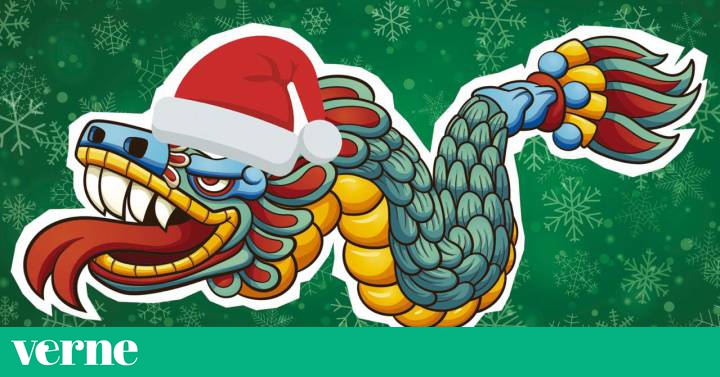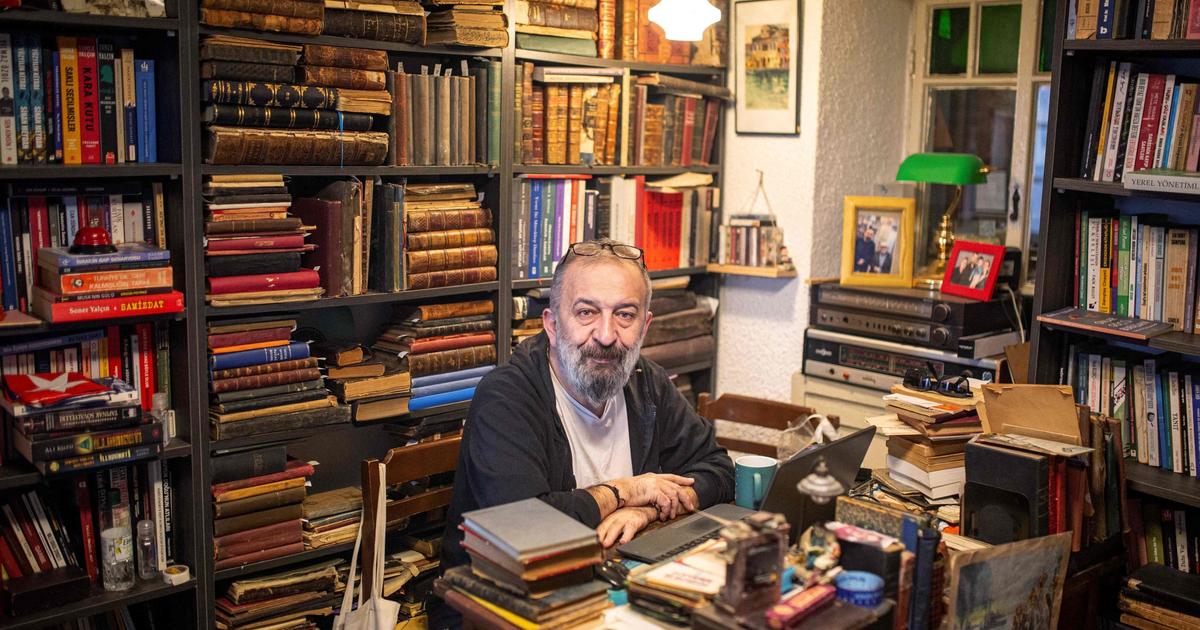In the 1930s, when the media and a well-known soft drink began to popularize the image we know today of Santa Claus –– also called Santa Claus, San Nicolás or Viejito Pascuero –– a group of Mexican politicians wanted to come to the rescue of national identity and to propose Quetzalcóatl himself, "the most celebrated and considered the best and most worthy of the other gods," according to Jerónimo de Mendieta, in his Historia ecclesiastica indiana.
And they did it… for a day.
Quetzcóatl, creator of heaven and earth and associated with life, is considered one of the most important gods in Mesoamerican mythology.
"Yesterday I had the honor of having lunch with the President of the Republic and during the meal we agreed on the convenience of substituting the symbol of Santa Claus for Quetzalcóatl, a divinity that is Mexican," declared the then Secretary of Public Education, Carlos Trejo and Lerdo de Tejada, to the media, on November 23, 1930. The objective of the change was “to engender in the heart of the child love for our culture and our race.” The president was the engineer and diplomat Pascual Ortíz Rubio, always seen as "the pelele" of Plutarco Elías Calles and official candidate of the then PNR, the National Revolutionary Party, founded by Calles himself just a year earlier, according to historians Luis Aboites and Engracia Loyo, from El Colegio de México.
The decade of the 1920s and early 1930s was the time of revolutionary nationalism, the construction of a new state and the exaltation of Mexicanness.
The excessive love for pre-Hispanic roots, corn, chili, watermelons, traditions ... were picked up by the muralist movement or the group of the Stridentists "the loudest avant-garde of Mexican culture" who exclaimed their devotion to the mole de guajolote, while the music of Silvestre Revueltas, Manuel M. Ponce or Agustín Lara put the soundtrack to one of the most fruitful times of music in Mexico.
The National Stadium, where the 1926 Central American and Caribbean Games were held. Demolished in 1949 to build the Juárez housing complex.
Creative Commons.
Mexico City in Time
After the 1910 Revolution, the indigenous world continued to be thoroughly reviewed to extract from it how many symbols were useful for the construction of its own identity.
And the political class wanted to do their bit.
They did so by creating La Sinfónica Nacional (1928);
the Fondo de Cultura Económica (1934) and Nacional Financiera (1934), to mention a few milestones.
That's why perhaps no one was surprised by Santa's substitution of the feathered serpent.
Is there anything more anti-Mexican than a man who wears a hat, gloves and travels in a sleigh?
In this context, on December 23, 1930, at the National Stadium, President Pascual Ortíz Rubio organized a gift delivery to thousands of children in front of a scene that imitated a temple in honor of Quetzalcóatl.
In the place there were “Christmas trees decorated with colored lights, the procession of priests, battalions and dancers honoring the feathered serpent”, the chronicles of
El Universal
told
of the time.
The first lady, Josefina Ortíz, was one of those in charge of distributing toys and sweets to the children who attended the show, which was attended by some 15,000 people.
The newspaper
El Informador also
reported on the front page of December 24, 1930: “Today in the afternoon and at the National Stadium, a brilliant Christmas party for poor children took place, sponsored by the National Association for the Protection of Children. chaired by the lady of the President […].
It was very attractive and a number on Toltec motifs was very popular, representing Quetzalcóatl […] when the program ended the President accompanied by his wife, they proceeded to distribute clothes, sweets and toys that four or five thousand attended.
Once the party was over, the Quetzatcóatl hymn was played ”.
enlarge photo On the left, the coumna published in 'El Universal' signed by Rubén Campos and on the right, the cover of December 24, 1930 of 'El Informador', a newspaper distributed in Guadalajara, Jalisco.
Where the party of Quetzalcóatl is narrated.
Hemeroteca El Universal / Hemeroteca El Informador
After the announcement in the newspapers, the scandal broke out.
According to the historian Alejandro Rosas, the Mexicans of the time wondered: “Who was going to distribute the gifts to the children, a feathered serpent?
Would a pagan god be used to celebrate the birth of Christ?
In his book Mexico Bizarro, Rosas says: "Society was completely opposed to the official provision, not for defending the unsympathetic Santa Claus, but because Christmas was a Catholic celebration."
However, there were others who defended the company.
The Mexican writer and researcher Rubén M. Campos (1876-1945) wrote
a text
for
El Universal
where you can see the mood of the time due to the presidential decree: “In these days a storm has been unleashed in a glass of water by the idea launched to all winds by the President to replace the old Santa Claus by the symbolic Quetzalcóatl.
There are those who brand the idea as anti-religious or clashing;
and no one has just appreciated the patriotic idea of launching one of our most beloved and glorious myths to veneration and popularity.
They assure that the universality of Santa Claus gives him the right to remain in the image of Mexicans and that it would be a desecration to uproot him from childhood imaginations.
In the debate, one and the other questioned how Mexican children could “feel identified with an old man dressed in furs, the lord of a sled that glides on the snow, of a clear 'Saxon or Russian' type and 'immune to the soot of the chimneys' ”in a country“ 'where there is only snow in the ice cream parlors, where men wear thin fabrics and walk aboard horses, cars or railways, but never on sleds' ”, explains the doctor in Art History, Itzel Rodríguez Mortellaro, in his conference 'The post-revolutionary rebirth of Quetzalcóatl', at the XXV International Colloquium of Art History, of the Institute of Aesthetic Research of the UNAM.
Ortiz Rubio's decree failed and on December 23, 1930, in the National Stadium, the first and last festival was held in which Quetzalcóatl received children in a temple built ad hoc.
Follow Verne México on Facebook, Twitter and Instagram and don't miss your daily ration of internet wonders.









